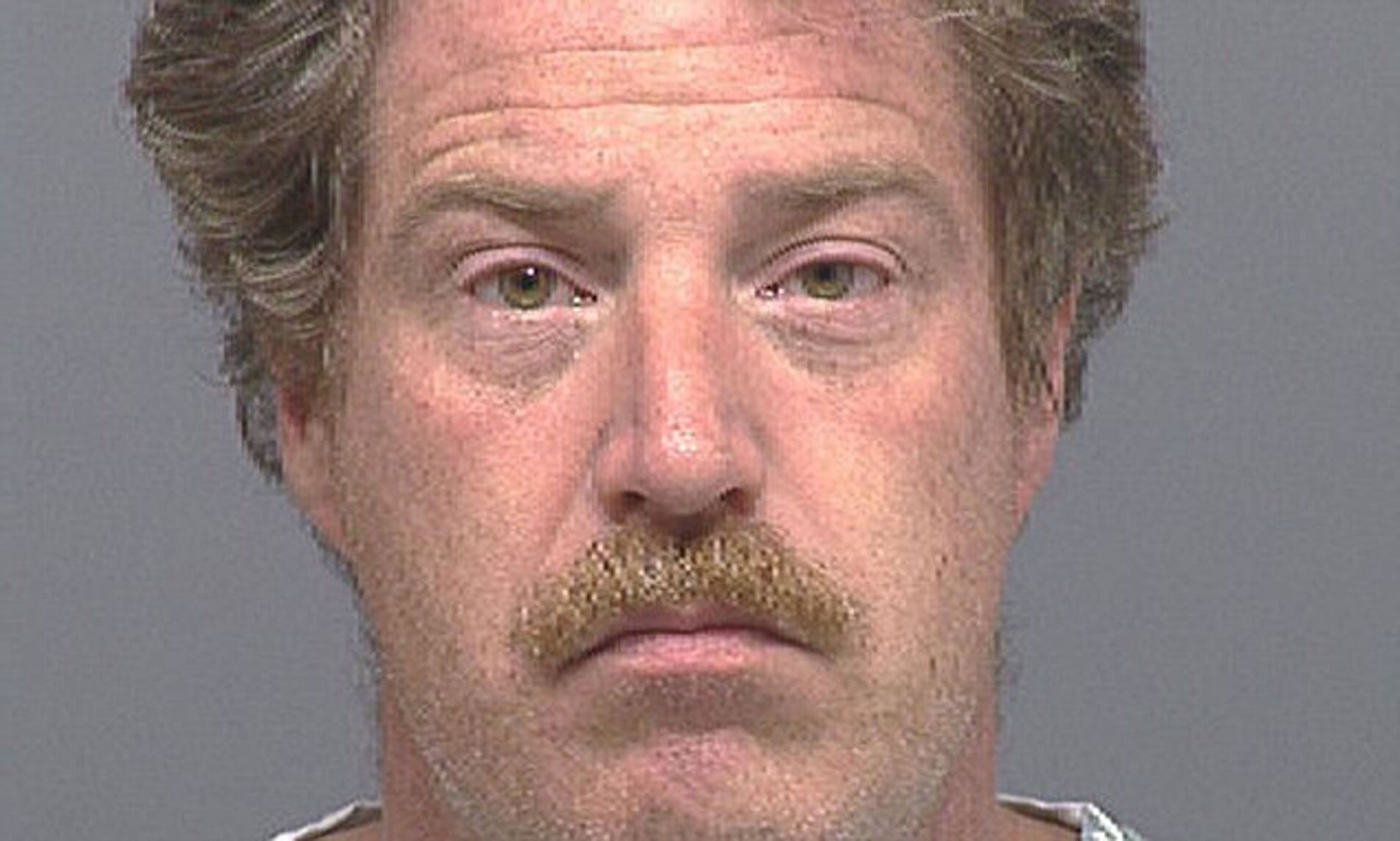
Who is Ward Weaver III? Ward Weaver III is an American convicted murderer serving a life sentence without parole. Born in 1963 in Humboldt County, California, his life is a grim tale of violence and crime. Weaver's story is intertwined with his father's, Ward Weaver Jr., who was also a notorious criminal. Weaver III's most infamous crimes include the 2002 murders of two young girls, Ashley Pond and Miranda Gaddis, in Oregon City. His violent behavior, marked by a history of sexual assault and domestic abuse, shocked the community and drew significant media attention. This article delves into 38 key facts about his life and crimes.
Key Takeaways:
- Ward Weaver III's troubled upbringing and violent family environment played a significant role in shaping his criminal behavior, highlighting the impact of early life experiences on an individual's path.
- The tragic disappearances and murders of Ashley Pond and Miranda Gaddis brought attention to the broader issues of domestic abuse, legal system failures, and the need for vigilance in protecting vulnerable individuals.
Early Life and Family Background
Ward Weaver III's life was shaped by a tumultuous family environment and a legacy of violence. Let's explore the early years and family influences that contributed to his dark path.
-
Ward Francis Weaver III was born on April 6, 1963, in Humboldt County, California. His early years were marked by instability and turmoil.
-
His father, Ward Weaver Jr., abandoned the family in 1967. This event deeply affected young Ward, contributing to his troubled childhood.
-
Weaver's mother, Trish, later remarried Bob Budrow, an abusive alcoholic. The family relocated to Portland, Oregon, where the abuse continued.
-
Weaver's home life was marked by severe abuse from both his biological father and stepfather. This environment fostered a lifelong distrust and hatred towards his mother, Trish.
Antisocial Behavior and Early Crimes
Weaver's early years were characterized by antisocial behavior and escalating violence. These patterns foreshadowed his later, more heinous crimes.
-
As a teenager, Weaver exhibited antisocial traits, frequently attacking his siblings. By age 12, he had started sexually abusing a female family member.
-
Weaver attended Marshall High School in Portland, Oregon. During this time, he became increasingly antisocial, often clashing with authority figures.
-
In 1981, shortly before graduating, he viciously raped and beat a female relative. Despite police involvement, no charges were filed due to his impending enlistment in the Navy.
Military Service and Marriage
Weaver's brief stint in the military and his tumultuous marriage further illustrate his pattern of violent behavior.
-
Weaver enlisted in the U.S. Navy Reserve in 1981 but was discharged in May 1982 for heavy drinking and dereliction of duty. During his tenure, he met Maria Stout, a native of the Philippines, whom he later married.
-
Weaver and Maria Stout had a son, Francis, in December 1982. However, it was later determined that Francis was not Ward Weaver's biological son.
-
The couple's relationship was marked by physical, mental, and sexual abuse. Maria was hospitalized after being assaulted by Weaver five months into her pregnancy, but she refused to press charges.
Escalating Violence and Legal Troubles
Weaver's violent tendencies continued to escalate, leading to numerous legal troubles and further highlighting his dangerous behavior.
-
In 1993, Maria obtained a restraining order against Weaver after he became physically violent towards her. He then beat his new girlfriend, Kristi, with a cast-iron skillet.
-
Weaver attacked a teenage daughter of a friend with a concrete block in California. This incident further demonstrated his propensity for violence.
-
In 1988, Weaver was convicted of assaulting two teenage girls in Fairfield, California. This incident highlighted his ongoing pattern of violent behavior against women.
The Disappearance and Murder of Ashley Pond and Miranda Gaddis
The tragic disappearances and murders of Ashley Pond and Miranda Gaddis brought Weaver's violent tendencies to national attention.
-
In January 2002, 12-year-old Ashley Pond disappeared while walking to her bus stop near Weaver's residence in Oregon City. Despite reports of attempted rape, no charges were filed.
-
Two months after Ashley Pond's disappearance, 13-year-old Miranda Gaddis vanished under similar circumstances. The police believed the two disappearances were connected.
-
During an investigation into the rape of his son's girlfriend, authorities discovered the remains of both girls on Weaver's property in August 2002. This discovery confirmed the worst fears of the community.
-
Weaver had dug a hole in his yard and covered it with concrete, claiming it was for a hot tub. However, the concrete slab was unearthed during the investigation, revealing Ashley's remains in a barrel and Miranda's remains in an empty box in a storage shed behind his house.
Arrest and Conviction
Weaver's arrest and subsequent conviction brought some measure of justice for the victims and their families.
-
Weaver was arrested for the attempted rape of his son's girlfriend. The FBI executed a search warrant on his property, leading to the discovery of the girls' remains.
-
In 2004, Weaver was sentenced to life without parole for the sexual assault and murder of both girls. This sentence reflected the severity of his crimes.
The Legacy of Violence
The Weaver family's legacy of violence extends beyond Ward Weaver III, with his father's crimes casting a long shadow.
-
Ward Weaver Jr., Ward III's father, was convicted in 1984 of the first-degree murders of Robert Radford and Barbara Levoy. He was also suspected of up to 24 other murders.
-
Weaver Jr.'s truck logs from his years of driving matched the timelines of numerous missing persons and murders. Ron Schumacher, who prosecuted Weaver Jr., believed that he was connected to dozens of other unsolved cases.
Psychological and Social Impact
Weaver's actions had a profound impact on his family and community, highlighting broader issues of domestic abuse and legal system failures.
-
Weaver III's actions had a profound impact on his family members. His daughter, Mallori, was arrested for attacking a security guard, suggesting that she may have been suffering from the trauma of her father's crimes.
-
The case highlighted significant failures in the legal system. Prosecutors in 1981 decided not to pursue charges against Weaver III for raping a teenage family member because he was enlisting in the armed services.
-
Weaver III's case is part of a broader issue of domestic abuse within the military. Studies have shown that perpetrators of domestic abuse are often attracted to the military and may continue their violent behavior while serving.
-
For those affected by domestic abuse, there are resources available. The National Domestic Violence Hotline can be reached at 800-799-7233, and childcare.gov provides information on specific state processes for helping children in abusive situations.
-
Weaver III's upbringing in an abusive home environment likely contributed to his psychological trauma. The repeated exposure to violence and abuse can damage brain chemistry, leading to a predisposition towards violent behavior.
Media Attention and Public Perception
The case of Ward Weaver III garnered significant media attention, shaping public perception and highlighting the need for vigilance in protecting vulnerable individuals.
-
The disappearance of Ashley Pond received international media attention and was profiled on various television programs, including "Unsolved Mysteries". This coverage helped keep the case in the public eye.
-
The case garnered significant media attention, with reporters descending on Oregon City to interview Weaver. Despite his attempts to deflect suspicion, the public and investigators remained focused on him as the prime suspect.
-
The FBI conducted a thorough investigation, including a raid on a neighbor's home who had a checkered past and failed a polygraph test. However, no additional evidence was found linking the neighbor to the crimes.
-
Before his arrest, Weaver III had become increasingly restless due to the media attention and rumors swirling around town. He packed up his belongings, planning to move either to Idaho or Mexico.
-
Witnesses described Weaver III as being possessed by a malevolent force during the rape of his son's girlfriend. This incident highlighted the depth of his psychological issues and the potential for violent outbursts.
Legal and Psychological Analysis
Analyzing Weaver's defense strategy and psychological state provides insights into his motivations and the broader implications of his case.
-
During his trial, Weaver III defended his actions by claiming he was trying to help Ashley out of a difficult family situation. However, this defense was met with skepticism by investigators and the public.
-
A psychological evaluation of Weaver III might have provided insights into his motivations and behaviors. However, such evaluations were not conducted until after his arrest.
-
Weaver III's defense strategy focused on deflecting responsibility and portraying himself as a victim of circumstance. This strategy was met with skepticism by investigators and the public.
Impact on the Community and Legal System
The case had a lasting impact on the community and highlighted the need for improvements in the legal system and support for victims of domestic abuse.
-
The case had a profound impact on the community. The disappearance and murder of two young girls shocked residents and raised questions about the effectiveness of law enforcement and the justice system.
-
Weaver III's family dynamics were marked by severe abuse and trauma. His father's influence and the abusive home environment contributed to his own violent tendencies.
-
Weaver III's case may be linked to other unsolved cases. The investigation into his crimes revealed a pattern of behavior that suggests he may have been involved in additional violent acts.
-
Weaver III is currently serving a life sentence without the possibility of parole. His case serves as a reminder of the importance of holding perpetrators accountable for their crimes and ensuring that justice is served for victims and their families.
The Legacy of Ward Weaver III
Ward Weaver III's life is a chilling reminder of the impact of domestic abuse and unchecked violence. His crimes, including the murders of Ashley Pond and Miranda Gaddis, highlight significant failures in the legal system. Despite early signs of antisocial behavior and violent tendencies, Weaver III was allowed to continue his destructive path. The media attention and subsequent investigation brought justice for the victims, but it also exposed the need for better support systems for those affected by domestic violence. Weaver III's case underscores the importance of protecting children from abusive environments and holding perpetrators accountable. His story serves as a cautionary tale about the dangers lurking within seemingly ordinary lives. The legacy of Ward Weaver III will forever be a stark reminder of the consequences of ignoring the signs of abuse and violence.
Frequently Asked Questions
Was this page helpful?
Our commitment to delivering trustworthy and engaging content is at the heart of what we do. Each fact on our site is contributed by real users like you, bringing a wealth of diverse insights and information. To ensure the highest standards of accuracy and reliability, our dedicated editors meticulously review each submission. This process guarantees that the facts we share are not only fascinating but also credible. Trust in our commitment to quality and authenticity as you explore and learn with us.


